#79 d.C.
Text
Fun Fact

Do you know about the carbonized papyri of Herculaneum? Thanks to AI, they can now be read without any damage! This allows us to gain some interesting new information: for example, one of the recently deciphered papyri tells us about the last night of Plato. Apparently, he had a high fever and couldn't stand the music played while he was on his deathbed. We also learned where he was buried: in the garden of the Academy, near a temple dedicated to the Muses.
I hate AI in many contextes, but I'm glad it's being used in this one.
#studybrl#study blog#student#studying#University#Uni#College#Dark academia#Light academia#classic academia#renaissance#Ancient Rome#Ancient Greece#herculaneum#vesuvius#pompeii#papyrus#Papyri#Carbonized papyri#79 d.C.#Ancient greek#Latin#AI#History#Literature#Classics#Ancient literature#Plato#Platonic academy#aristotle
4 notes
·
View notes
Text
Villa San Marco, il racconto

View On WordPress
0 notes
Text
Pompei, nuove stanze fanno luce sulla vita al momento dell'eruzione del Vesuvio nel 79 d.C.
In una stanza c'è un armadio rimasto chiuso per 2000 anni, completo di stoviglie ancora all'interno
0 notes
Text
Got a wild one here for ya Nunny.
Submitted anonymously.
Oh fun, we got rage against the white saviors hitting now then?
::::::Obligatory "white man's burden" reference here::::::
__________________
From coast to coast, wokeness is facing a rebellion.
Communities are fighting to reclaim their local heritage after a cancel-culture rampage in recent years eviscerated Native American images, nicknames and tributes at hundreds of schools nationwide.
"We’re actually fighting an anti-American movement," Lisa Davis, a pro-Native American activist in Cedar City, Utah, told Fox News Digital.
"The people trying to erase Native American culture are the same people trying to remove Thomas Jefferson and bashing American heritage."
Davis and other Cedar City residents formed the grassroots organization VOICE (Voices of Iron County Education) after the school board voted to eliminate the high school’s traditional Redmen name and logo in 2019.
"It was an honor to be called the Redmen," Julia Casuse, a "full-blooded Navajo" and graduate of Cedar City High School, told Fox News Digital.
The silversmith said she tells visitors at the family’s shop, Navajo Crafting Co., "I’m a Redmen through and through."
The school's nickname is now the Reds.
Yet the irony of the new name is not lost on Cedar City residents. "We went from honoring centuries of American and Native American history to honoring communism," said Davis.
"The people trying to erase Native American culture are the same people trying to remove Thomas Jefferson and bashing American heritage."
Eunice Davidson, a Dakota Sioux and president of the Native American Guardians Association (NAGA), told Fox News Digital, "It’s a terrible injustice to these communities,"
She and others claim the decisions to remove Native American images, nicknames and logos are made by local school boards, which are often under pressure from well-funded outside forces.
"The decisions never have popular support," said Davidson, whose organization is based in North Dakota.
"The taxpayer is being shunned and the school boards don’t care anymore. It’s Marxism and it’s taken over the school boards."
The grassroots group VOICE claims that 79% of local residents voted in support of the Redmen in a recent Change.org survey.
Battles all across the country
Communities around the nation are waging similar battles.
Activists in Killingly, Connecticut are fighting to reclaim the town's Redmen tradition after it was trampled by a statewide mandate to wipe out its own Native American legacy.
Cambridge, New York has taken its fight to save its beloved Indians tradition to the courts — after the Board of Regent announced its plan to trample Native American history across the Empire State.
Local residents recently voted two new pro-Native American candidates onto its school board, including Iroquois Dillon Honyoust.
"When you think about Native Americans, any icon that you see is about strength, honor, pride. Always a positive symbol to portray the strength of our heritage," Honyoust said in an interview with WAMC Northeast Public.
The school board in Southern York County, Pennsylvania voted in January to allow Susquehannock High School to bring back its traditional Warriors name and logo.
The decision came after five new school board members won elections in November by running on pro-Native American platforms.
"This movement was about erasing Native American culture and I wasn’t about to stand for it," Jennifer Henkel, a mother of three children and one of the new school board members, told Fox News Digital previously.
The powerful group National Congress of American Indians (NCAI), based in Washington, D.C. has led the effort to erase Native American images in local communities around the nation. The organization is funded by benefactors such as George Soros’ Open Society Foundations, along with taxpayer dollars.

Gonna clip it here, but it's wild (also not unexpected) to see things like this at the end of the piece
Students at Wellpinit (Washington) High School voted to keep the school's Redskins mascot in March 2023, rejecting calls to erase history and heritage by local Democrat leaders.
The student body is 87% Native American, according to the Department of Education.
So much of this stuff is the 'offended on your behalf' nonsense we've been seeing for decades.
Gotta wonder if this kind of thing continues to gain momentum if the "I" will get dropped from BIPOC.
The NCAI "has tracked the retirement of more than 200 unsanctioned Native ‘themed’ mascots since 2019, and has supported legislation banning the use of these mascots in multiple states," the group said in a statement last year to Fox News Digital.
The group is also largely responsible for the effort to force the NFL's franchise in Washington, D.C., to drop its traditional Redskins name and the familiar Native American face that appeared on the team's helmets.
"Widely consumed images of Native American stereotypes in commercial and educational environments slander, defame and vilify Native peoples," the NCAI claimed in a 2013 report that tilted public opinion against the Redskins and other Native American images.
The report, however, offered a dubious narrative. Among other omissions, the report's lengthy history of the Redskins failed to mention Blackfoot Chief John Two Guns White Calf — even though he served as the face of the franchise for 48 years.
He was one of the most influential Native Americans of the 20th century. He fought for Native American causes and counted President Calvin Coolidge among his sphere of influence.
His proud facade appeared on Redskins helmets from 1972 until he was canceled in 2020. The NCAI scrubbed his name from its history of the franchise.
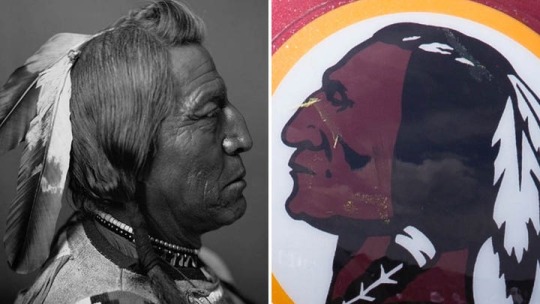
Fox News Digital reached out to the NCAI for further comment.
Communities across the nation, however, are fighting to preserve their Chief White Calf Redskins logo.
Voters in Sandusky, Michigan recalled three school board members who voted to eliminate the Redskins. They've since elected three new school board members who ran on promises to reclaim the Redskins.
Rick Spiegel, an activist in Sandusky who is leading the effort to reclaim the Redskins, said 2,100 registered voters in the town responded to a mail-in survey, with 90% supporting the traditional name.
A survey at the high school revealed that 74% of students, and 53% of teachers, supported the Redskins.
Even so, the Sandusky High School teams are now known as the Wolves.
"They're trying to erase or eradicate Native American history," said Spiegel.
The Michigan communities of Camden, Pawpaw and Port Huron, he said, are fighting similar battles to preserve local traditions.
The Red Mesa (Arizona) High School Redskins installed a new football field last year with a Redskins logo splashed across the 50-yard line.
Students at Wellpinit (Washington) High School voted to keep the school's Redskins mascot in March 2023, rejecting calls to erase history and heritage by local Democrat leaders.
The student body is 87% Native American, according to the Department of Education.
Kingston (Oklahoma) High School is also a majority Native American school that embraces the Redskins.
"The people that I’ve talked to — they have a sense of pride about our name, and about our mascot being the Redskins," Kingston athletic director Taylor Wiebener told KXII.com in 2020.
Students and residents of Donna, Texas, and McCloud, Oklahoma, have repeatedly voiced support for their Redskins identity, despite constant pressure, according to Native American activist Andre Billeaudeaux.
Casuse, the Navajo alumna of Cedar City High School in Utah, claims her allegiance to the Redmen began when she arrived at the school from a Navajo reservation in New Mexico in the 1960s.
She was feeling homesick while attending her first home football game.
"It gave me a sense of honor … It was a proud feeling for me, a sense of my heritage."
"All of a sudden I heard a very strong native beat. The school song," she said. "It stopped me in my tracks. It was wonderful hearing that sound and the beautiful Native music."
She suddenly felt at home, she said, adding that she served as a member of the pep club throughout high school.
"It gave me a sense of honor. I was never embarrassed about it, never felt any tinge of prejudice. It was a proud feeling for me, a sense of my heritage."

81 notes
·
View notes
Text
The Elegant Mr. Arthur
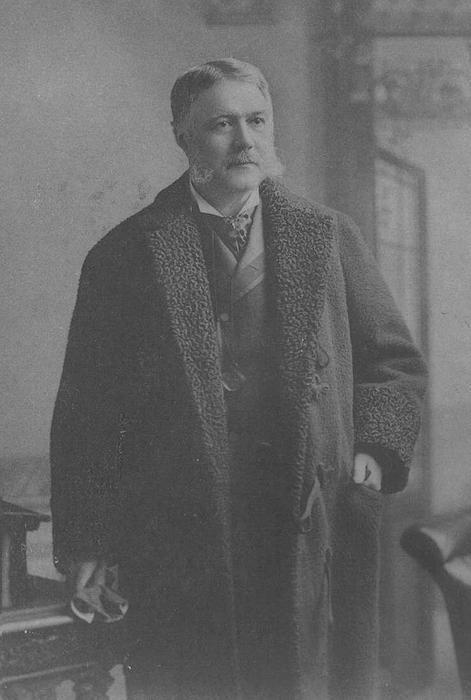
It was about two hours after midnight on September 20, 1881, and not unusual for the resident of 123 Lexington Avenue in New York City to be awake at such a late hour or to have plenty of guests. In fact, he preferred to keep late hours, entertaining friends deep into the night with late-night dinner, drinks, and endless conversation. Yet, on this night, 123 Lexington Avenue was somber and the mood was grave. Just a few hours earlier -- at 11:30 PM -- a messenger knocked on the door of Vice President Chester Alan Arthur's Manhattan brownstone and handed Arthur a telegram. Surrounded by a few friends and colleagues, Arthur read that President James Garfield, just 49 years old and in office for almost exactly 200 days, had died at a beach cottage rough 60 miles away, in Elberon, New Jersey. Turning to his friends in his sitting room, Arthur said, "I hope -- my God, I do hope it is a mistake."
On July 2nd, President Garfield was shot twice and seriously wounded by Charles Guiteau as he walked through the Baltimore & Potomac Railroad Station in Washington, D.C. with Secretary of State James G. Blaine and Secretary of War Robert Todd Lincoln (son of Abraham Lincoln), en route to a speaking engagement at his alma mater, Williams College in Massachusetts. Guiteau was a disgruntled, disturbed, and delusional office-seeker who had been pleading for an appointment as consul to Paris despite an absence of diplomatic or political experience and a complete lack of qualifications. Hounding Garfield throughout the early months of an Administration that had just begun on March 4, 1881, Guiteau's constant harassment of the new President finally resulted in Secretary Blaine ordering Guiteau to never return to the White House again. Guiteau felt that he had been entitled to some office, particularly a high-profile ambassadorship, and was terribly upset that Garfield and his Cabinet members refused to consider his requests. Blaine's order to stay away drove Guiteau to purchase an ivory-handled .44 British Bulldog revolver (specifically chosen because Guiteau felt that particular firearm would look good in a museum) and he began stalking Garfield throughout Washington before finally shooting him in the rail station two days before Independence Day 1881. As police arrested him, Guiteau shouted, "I am a Stalwart of the Stalwarts...Arthur is President now!"
But, Arthur wasn't President; not yet at least. Garfield was a physically robust man and relatively young in comparison to most Presidents. Although one bullet had lodged in Garfield's spine, the other bullet grazed his arm and caused no significant damage. While it appeared that he was gravely immediately following the shooting, Garfield's vital signs soon started to improve and the American people began to get their hopes up about a full recovery. A vigil of sorts was underway as President Garfield convalesced in the White House, and his doctors issued regular bulletins updating his condition. Garfield's doctors also poked and prodded with unsterilized instruments and dirty fingers to attempt to locate the bullet still inside of the President's body. Had they left it alone, Garfield almost certainly would have survived; his wounds were significantly less dangerous than those survived by Ronald Reagan 100 years later. However, the unnecessary poking and prodding resulted in a serious infection that ravaged Garfield's body, weakened his heart, and left the muscular, 215-pound President emaciated and weighing less than 135 pounds. After fighting for his life in the sweltering summer heat of Washington, on September 6th it was finally decided to transport Garfield to a cottage on the Jersey Shore in hopes that he could benefit from the fresh ocean air. Sadly, it was too late. The infections were accompanied by blood poisoning and pneumonia, among other ailments. On September 19th, at 10:35 PM, Garfield suffered a massive heart attack and was pronounced dead. In the 79 days since he had been shot, Garfield had lost over 80 pounds and the 49-year-old President's dark brown hair and beard had turned a ghastly white color. An hour later, the messenger arrived at 123 Lexington Avenue.
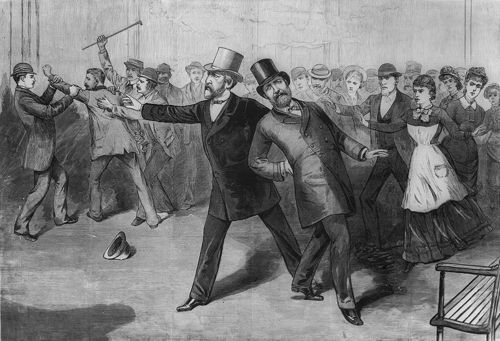
•••
The Vice Presidency was a stretch. Chet Arthur of New York as Vice President? When offered the Republican Vice Presidential nomination by James Garfield in 1880, Chester Arthur was urged by his political mentor, the leader of the Stalwart branch of the Republican Party, Senator Roscoe Conkling of New York, to decline the appointment. Arthur, a man who had never spent a day in Congress or been elected to any office at any level, couldn't turn down such an unexpected opportunity. He accepted the nomination and was elected alongside Garfield in November 1880, but most of the country (rightfully) saw Arthur as the poster boy for a machine politician elevated by the spoils system. The Vice Presidency was certainly a stretch for Chester Arthur, but President of the United States? That was an almost frightening thought to a nation still recovering from Civil War and desperately seeking civil service reform, especially now that a disgruntled office-seeker has assassinated the President. The idea of Arthur as President left a lot of Americans worried -- some because Arthur's political background was as the powerful and somewhat shady Collector of the Port of New York, appointed during the controversial Administration of President Ulysses S. Grant and eventually fired by President Rutherford B. Hayes during a housecleaning of corrupt institutions; and some because James Garfield's murderer had claimed to be a Stalwart and, by his own words, insinuated that Garfield's shooting might be a conspiracy on behalf of Arthur's faction of the divided Republican Party.
Chester Arthur was a creature of the era known as the "Gilded Age" and was the symbolic mascot for the widespread corruption of the 1870's due to his position at the Port of New York. Born in Vermont in 1829, Arthur was the son of a preacher and grew up mostly in upstate New York, graduated from Schenectady's Union College in 1848, briefly taught school was studying law, and was admitted to the bar in 1854. As his law practice grew in the 1850's, Arthur immersed himself in New York Republican politics yet never ran for office. A political appointee to the New York State Militia, he found himself serving during the Civil War and his superb organizational skills led to quick promotions all the way to quartermaster general in 1862, a position which carried the rank of brigadier. As a political appointee to the militia, however, Arthur served at the pleasure of the Governor of New York and was forced to resign in 1862 when a Democratic Governor took office. Returning to New York City, Arthur resumed his law practice and political gamesmanship. More appointments came his way as he supported Republican candidates throughout the state and worked on national campaigns such as President Lincoln's 1864 bid for re-election and Ulysses S. Grant's 1868 Presidential campaign.
In 1871, President Grant appointed Arthur as Collector of customs at the Port of New York, which gave Arthur responsibility for about 75% of the nation's customs duties and was one of the most powerful patronage positions available in the United States government. Arthur used his office to efficiently raise money for Republican campaigns and candidates, supporting President Grant's 1872 re-election campaign by seeking contributions from his employees at the customhouse. In 1876, Arthur championed his political mentor, Roscoe Conkling, for the Republican Presidential nomination, but supported Rutherford B. Hayes in the general election, once again using the employees at the customhouse to help raise money to finance the successful Republican campaign. However, once Hayes was elected, the new President made it clear that he was serious about civil service reform and that meant reforming Arthur's customhouse, too. In 1877, Arthur testified before the Jay Commission, which was formed to investigate charges of corruption and eventually recommended that President Hayes reduce the workforce of the customhouse and eliminate the corrupt elements that had worked there for so long. Due to Arthur's longtime support of the Republican Party, President Hayes offered him an appointment as consul in Paris in order to quietly remove him from the Port of New York. When Arthur refused the appointment, the President fired him and Arthur resumed his law practice in New York City (Hayes intended to replace Arthur with Theodore Roosevelt, Sr. -- father of the future President -- but Conkling felt insulted by Hayes's termination of Arthur and worked to kill Roosevelt's appointment during his Senate confirmation ).
When Arthur headed to the 1880 Republican National Convention at the Interstate Exposition Building in Chicago, it was as a New York delegate supporting the aspirations of former President Ulysses S. Grant who was coming out of retirement to seek an unprecedented third term. However, neither of the front-runners for the nomination -- Grant and Senator James G. Blaine of Maine -- could capture enough votes from delegates to clinch the nomination. After thirty-five ballots, Blaine and another prospective candidate, John Sherman of Ohio, threw their support behind a dark horse candidate -- Ohio Congressman James A. Garfield. On the next ballot, Garfield clinched the nomination and reached out to the opposing wing of the Republican Party for his Vice Presidential choice. The first choice, Levi P. Morton of New York (who would later serve as President Benjamin Harrison's Vice President) declined Garfield's offer, and Arthur -- who had never previously held an elective office -- excitedly accepted, much to the chagrin of his angry political mentor, Roscoe Conkling. Not confident in Garfield's chances for election, Conkling told Arthur, "You should drop it as you would a red hot shot from the forge." Arthur replied, "There is something else to be said," and Conkling asked in disbelief, "What, sir, you think of accepting?" Despite the complaints and anger of Conkling, Arthur told him, "The office of Vice President is a greater honor than I have ever dreamed of attaining. I shall accept. In a calmer moment you will look at this differently."
Following the election, Arthur prepared to settle into the quiet role of Vice President during the 19th Century. The Vice President of the United States has only one real Constitutional responsibility -- to preside over the Senate, and even that responsibility is normally delegated to Senators who rotate as presiding officer almost daily. The powerful or even influential American Vice Presidency is a fairly recent evolution, not even 50 years old. While some Vice Presidents were relied upon for advice or counsel or given larger duties than others, most Vice Presidents were so far removed from the Executive Branch that they were not only kept out of the decision-making process but also kept in the dark about certain information. For example, when President Franklin D. Roosevelt died towards the end of World War II in April 1945 and was succeeded by his Vice President, Harry S. Truman, the new President Truman had to be quickly briefed about the existence of the Manhattan Project to develop atomic weaponry. The first Vice President to have an office in the White House was Walter Mondale and that didn't occur until 1977, so in 1881, a Vice President was expected to preside over the Senate on special occasions, cast a tie-breaking vote when necessary, and be available to take the oath of office if the President happened to die or resign.
Like most 19th Century Vice Presidents, Chester Arthur didn't even spend much time in Washington, and he was returning to his regular home in New York City on July 2, 1881 when he stepped off a steamship with Roscoe Conkling and was told that President Garfield had been shot. In fact, the first message that Arthur received erroneously reported that Garfield was already dead and at the request of Garfield's Cabinet, the stunned Vice President immediately returned to Washington, D.C. to proceed with the next steps necessary for maintaining the continuity of government. When Arthur arrived in Washington, President Garfield's condition had improved and his recovery continued to show signs of promise as the Vice President and the nation prayed for him and held vigil throughout the summer. Shaken by rumors that he and his "Stalwart" wing of the Republican Party conspired to assassinate Garfield, Arthur returned home to New York City, hesitant to invite criticism that his continued presence in Washington was merely an eager deathwatch so that he could grab power.
Garfield clung to life for eighty excruciating days with doctors probing him in an effort to remove the bullet in his body, causing infections and leaving the President suffering from blood poisoning which led him to hallucinate at times. The Navy helped rig together an early form of air conditioning in Garfield's White House sickroom in order to give him relief from Washington's stifling summer conditions. When Garfield was taken by train to New Jersey in early-September, it was clear to many that the long vigil was nearly over. More infections set in, along with pneumonia and painful spasms of angina. When the messenger arrived at 123 Lexington Avenue just before midnight on September 20, 1881 to inform Arthur that President Garfield had died just 60 miles away, the new President wasn't surprised, but he also wasn't quite prepared. The nation worried about the lifetime political operative stepping into the position vacated by the promising President assassinated before he could enact the civil service reforms promised in his Inaugural Address. What would Arthur -- the quintessential patronage politician -- do as President? Nobody knew, but Chester Alan Arthur had an idea.
•••
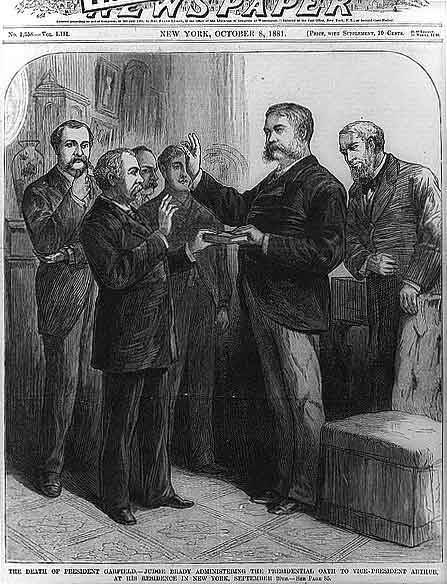
It was fitting that Arthur was surrounded by friends when he took the oath of office at his home in Manhattan at 2:15 AM on September 20, 1881. Arthur's beautiful wife, Nell, died of pneumonia in January 1880 and he was inconsolable for months, regretting for the rest of the life the fact that she never saw his election as Vice President or ascendancy to the Presidency. People who knew Arthur stated that he clearly never fully recovered from her death, and that as a "deeply emotional...romantic person," it was no surprise that he ordered that fresh flowers were placed before her portrait in the White House every day while he was President.
Chester Arthur had a lot of friends. That's what happens when you control as many patronage positions as Arthur controlled for as long as Arthur controlled them. But it wasn't just his political position that gained him friends. Arthur was a great storyteller, a man who loved to hunt and fish, kind, easy-going, charming, graceful, and smooth. During his life he was nicknamed "Elegant Arthur" and is considered one of the most stylish of Presidents. Photographs of Presidents from the 19th Century show us men no different than statues. They dressed the same, they looked the same, and when portrayed in the black and white photos of the time, we feel no differently when we see their pictures than when we see a slab of marble carved in their image. Arthur leaps out of his photographs, however. He was a very large man for his era, standing 6'2" and weighing around 220 pounds during his Presidency. Large muttonchops connected to a bushy mustache and his close-cropped, wavy brown hair seemed to pull back his forehead and place more emphasis on expressive black eyes that easily reflected his moods. While it seems that most Presidents of the 19th Century wore the same boring black suit and black tie like a uniform, Arthur's ties are patterned, his jewelry is visible, collars are crisp, handkerchiefs are folded creatively, and his lapels shine as if they were polished along with his shoes. We see photographs of Arthur in fashionable overcoats, a wide variety of hats, and he employed a personal valet who helped the President change clothes for every occasion and multiple times a day -- he was said to have over 80 pairs of pants.
Most apparent of all is that Arthur was a gentleman -- an interesting man with superb social skills and fastidious manners. Even as one of the top operatives in New York's Republican political machine of the corrupt 1870's, he was nicknamed the "Gentleman Boss." As President, he brought entertainment back to the White House -- something that had been missing on a large scale since before the Civil War twenty years earlier. One of his recent predecessors, Rutherford B. Hayes, was one of the few critics of this development, stating that there was "nothing like it before in the Executive Mansion -- liquor, snobbery, and worse." Arthur also redecorated the White House, hiring Louis Comfort Tiffany to help with the design. To help raise money for the redecoration, Arthur basically held a White House yard sale. On the lawn of the mansion, twenty-four wagons full of history (including a pair of Abraham Lincoln's pants that were left behind in a closet) were sold to citizens. To some, the items were priceless; to President Arthur, they were ugly and a man like Chester Arthur did not live in an ugly home. Several weeks after Garfield died, Arthur got his first look at his new home and quickly stated, "I will not live in a house like this." He didn't end up moving into the White House until three months into his Presidency.
•••
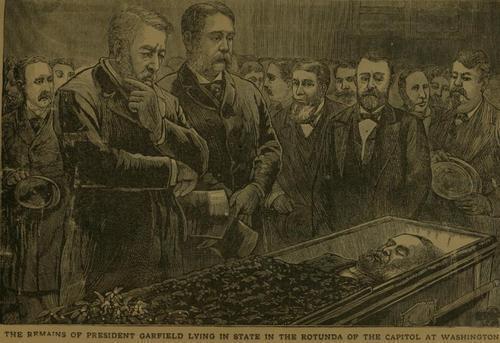
After taking the oath of office at home in Manhattan in the early hours of September 20, 1881, now-President Arthur proceeded to Washington, D.C., stopping in Long Branch, New Jersey to pay respects to the late President Garfield and his grieving family. Once Arthur succeeded to the Presidency upon Garfield's death, there was no Vice President, no president pro tempore of the Senate, and no Speaker of the House because Congress had not elected its leadership yet, thus, there was no Constitutional line of succession. If something had happened to Arthur at that moment, the United States would have faced an unprecedented Constitutional crisis. As his first act as President, Arthur immediately called the Senate into session in order to select their leadership positions and place someone in the line of succession. Upon arriving in Washington, Attorney General Wayne MacVeagh suggested that Arthur take a second oath of office and he did so at the U.S. Capitol on September 22nd in the presence of Garfield's Cabinet, members of Congress, Supreme Court Justices, and former Presidents Grant and Hayes.
Americans worried about the former machine politician's integrity were transformed quickly as Chester Arthur underwent somewhat of a transformation himself. Widely considered a lapdog of New York's Roscoe Conkling, Arthur broke ranks with the party boss and pushed for the same civil service reform championed by James Garfield prior to the assassination. Arthur's former associates in the New York Republican Party were disappointed when he declined their requests for political favors. One former colleague sadly reported, "He isn't 'Chet' Arthur anymore. He's the President." Arthur found that the transformation was almost automatic and out of his control, noting that "Since I came here I have learned that Chester A. Arthur is one man and the President of the United States is another." His old benefactor, Conkling, was one critic of the new President, complaining "I have but one annoyance with the Administration of President Arthur and that is, in contrast with it, the Administration of Hayes becomes respectable, if not heroic." Arthur signed the Pendleton Act in 1883 which created a modern civil service system and eliminated the spoils system that had long dominated American politics. The reform, which Conkling called "snivel service" was the final break between the longtime friends and colleagues.
To the American people, the great surprise of the Arthur Administration was the fact that it was clean, honest, and efficient. Arthur helped lift the gloomy moods that had shadowed Washington through the Civil War, Lincoln's assassination, Andrew Johnson's Impeachment, Reconstruction, the corruption of the Gilded Age, and Garfield's assassination. His popularity rose throughout his term and most critics focused on his lavish entertainment or the fact that he was notoriously late for meetings and seemed bored or lethargic at times. He often procrastinated -- as a White House clerk once said, "President Arthur never did today what he could put off until tomorrow." Still, most Americans were happy with President Arthur and echoed the thoughts of Mark Twain who said, "I am but one in 55 million; still, in the opinion of those one-fifty-five-millionth of the country's population, it would be hard to better President Arthur's Administration."
He was bored, though. President Arthur didn't like being President. He enjoyed the entertaining dinners that he could throw and loved public events or ceremonies that allowed him to meet the people of the United States, but the desk work was tedious and he wasn't interested in policy. Arthur stayed up late and seemed to vacation often, which perplexed many people because it was said that he was constantly exhausted. What they didn't know was that from almost the time he became President, Chester Arthur was dying. In 1882, he was diagnosed with Bright's disease, a fatal kidney ailment at the time. Despite reports that he was suffering from the disease, Arthur hid it from the public, desperately protecting his privacy, as always. Arthur's distaste for the Presidency probably stemmed in part from depression triggered by the Bright's disease. At times, Arthur suffered from debilitating illness and it was always covered with a story about the President catching a cold during a fishing trip or spending too much time in the sun while hunting. In a letter to his son Alan in 1883, the President confided, "I have been so ill that I have hardly been able to dispose of the...business before me."
Despite his popularity, Republican leaders opposed Arthur's nomination as President in his own right in 1884. The man who opposed it most, however, was the President himself, who stated "I do not want to be re-elected." Not only was he disinterested in a second term, but he knew very well that there was a possibility he might not even survive to the end of his current term. He did, and after attending the inauguration of his successor, Grover Cleveland, on March 4, 1885, Arthur returned home to New York City where his health rapidly declined. The former President was aware that he was dying and made plans for a relatively quiet retirement, deciding to practice law, but doing very little work due to his health. When asked about his future, Arthur said, "There doesn't seem anything for an ex-President to do but to go out in the country and raise big pumpkins." On November 16, 1886, Arthur suffered a stroke that paralyzed his left side. Gravely ill, he called his son to his bedside the day before his death and had all of his public and private papers stuffed into trash cans and burned. On November 18, 1886, the 57-year-old former President died in the same place he became President just five years earlier, 123 Lexington Avenue in New York City. After a quiet funeral at the Church of Heavenly Rest on Fifth Avenue in New York, Arthur's remains were buried next to his beloved wife at Rural Cemetery in Albany, New York.
•••
When President Arthur had many of his personal papers burned prior to his death, he eliminated one of the best sources of information for future historians. With a thin resume and a fairly uneventful Presidency, there wasn't much public information about his career, either. This leaves us with very little to remember Chester Alan Arthur by. Research on his life -- particularly his personal life -- is difficult, and Arthur would have appreciated that. During his Presidency, leaders of the temperance movement called on Arthur and urged him to follow the non-alcoholic lifestyle led by President Hayes and his teetotaler wife, who was known as "Lemonade Lucy."
Arthur's response: "Madam, I may be President of the United States, but my private life is nobody's damn business."
And so it isn't.
#History#Presidents#Chester Arthur#Chester A. Arthur#Chester Alan Arthur#President Arthur#Arthur Administration#Presidential History#The Elegant Mr. Arthur#James A. Garfield#President Garfield#Assassination of James Garfield#Garfield Assassination#Charles Guiteau#Inauguration of Chester Arthur#Presidential Assassinations#Presidential Succession#Roscoe Conkling#Gilded Age#Civil Service Reform#Pendleton Act#1880 Election#1884 Election#Politics#Political History#Gentleman Boss#Presidential Personalities#Presidency#Vice Presidents#Vice President Arthur
26 notes
·
View notes
Text

Copa de Tiberio. Tesouro de Boscoreale (79 d.C.)
56 notes
·
View notes
Text
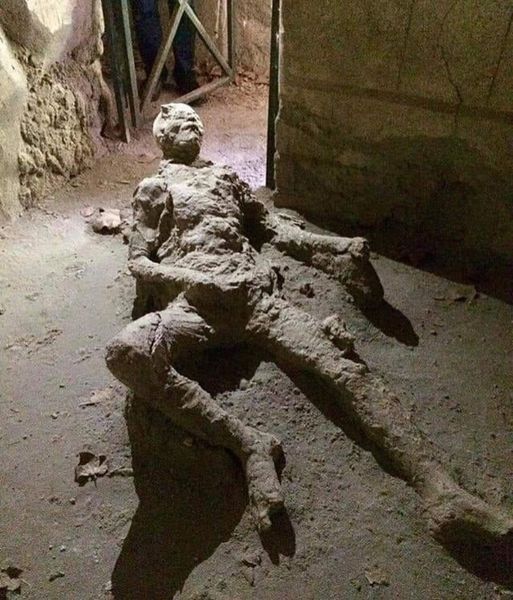
El masturbador de Pompeya, Imperio Romano, 79 d.C. La erupción del volcán Vesubio le pilló totalmente desprevenido y quedó así, en esta postura, para la eternidad.
The Pompeii Masturbator, Roman Empire, 79 A.D. The eruption of the volcano Vesuvius caught him completely unawares and he was left in this pose for eternity.
6 notes
·
View notes
Text
Sabias QUE?

¿Sabías que hay una maldición que afecta a los que se llevan objetos de Pompeya? 😱
Pompeya es una ciudad antigua que fue destruida por la erupción del volcán Vesubio en el año 79 d.C. donde miles murieron.
Pero no todos los visitantes respetan este lugar histórico.
Algunos se atreven a robar piedras o incluso restos humanos petrificados como recuerdo.
Lo que no saben es que esto puede traerles mala suerte😨
Así lo aseguró una mujer anónima q extrajo unas piedras pómez de Pompeya y luego desarrolló cáncer de pecho.

La creencia en la maldición de Pompeya se origina de los numerosos informes de sucesos desafortunados experimentados por personas que han extraído artefactos de las ruinas de la antigua ciudad romana.
La maldición, más una leyenda urbana que una creencia histórica, sostiene que aquellos que remueven objetos de Pompeya atraen la mala suerte o calamidades.
Como se mencionó anteriormente, aunque no hay evidencia científica que respalde la existencia de tal maldición, las historias y anécdotas de personas que afirman haber sufrido consecuencias negativas tras llevarse artefactos de Pompeya han perpetuado esta creencia a lo largo de los años.
Los repetidos incidentes en Pompeya subrayan la necesidad de una mayor conciencia y respeto por los sitios arqueológicos. Proteger estos tesoros es crucial no solo para preservar la historia, sino también para respetar la memoria de quienes perecieron en circunstancias tan trágicas.
Espero que esto no afecte a Souvenires comprados en Pompeya porque yo tengo uno ... UPS! 😱

12 notes
·
View notes
Text


I disegni di bambini dell’Antica Roma scoperti da poco sui muri di una casa a Pompei
Da martedì al parco archeologico di Pompei, il secondo sito archeologico più visitato al mondo, è possibile visitare un insieme di case (detto “insula” in latino) in precedenza chiuso al pubblico: si chiama “Insula dei Casti Amanti” ed è stata aperta nel contesto di un nuovo progetto di restauro, scavo e accessibilità. All’interno sono stati trovati i resti di due vittime dell’eruzione del Vesuvio che seppellì la città nel 79 d.C. e alcune raffinate pareti affrescate con figure mitologiche, ma soprattutto alcuni disegni a carboncino fatti probabilmente da bambini dell’epoca.
I disegni mostrano lotte tra gladiatori – che all’epoca si svolgevano nell’anfiteatro di Pompei – ma anche il contorno di tre piccole mani, due figure che giocano con una palla, due pugili stesi a terra e una scena di caccia a un animale che sembra un cinghiale. Secondo Gabriel Zuchtriegel, direttore del parco archeologico, i disegni sono stati probabilmente realizzati da uno o più bambini che giocavano in quello che era un cortile prima che la città fosse distrutta nell’eruzione. «Insieme agli psicologi dell’università Federico II siamo giunti alla conclusione che i disegni dei gladiatori e dei cacciatori sono stati realizzati sulla base di una visione diretta, e non di modelli pittorici. Probabilmente avevano assistito a scontri nell’anfiteatro, entrando così in contatto con una forma estrema di violenza spettacolarizzata», ha detto Zuchtriegel. [Il Post]
#news#archaeology#archeologia#notizie#il post#pompei#italy tag#italia#italy#people have always been people
4 notes
·
View notes
Text
Vietnam and Star Wars
Okay, y’all, I’m not going to write an entire essay just yet, but I don’t think we talk enough about the Vietnam war and how strongly Star Wars was influenced by that conflict.
I’m sorry for the following incoherent ramblings...
I would like to organize my thoughts about this, but I think there is so much to be discussed about this. I am currently taking an American Literature course focused entirely on the Vietnam war. Plenty of scholars out there have already written about the connection of Star Wars and real world conflicts. We all know the Empire and The First Order are based heavily upon Nazi Germany. The term “stormtrooper” is a literal translation of the original Nazi militia that helped bring Hitler to power. The uniforms, the helmets, and so much more in the movies and shows allude to real world militaries in order to help viewers identify the “good guys” from the “bad guys”. Of course, if you put photos of the Rebels and the Resistance fighters next to real US military pilots and soldiers, the similarities in uniform are pretty obvious.
But I really think we need to look at Vietnam and The Clone Wars in particular.


I’m sure most American and some non-American will recognize this kind of monument. Coming from an American who is entirely unfamiliar with different War Monuments throughout the world, this particular scene seemed to specifically call upon the Vietnam Memorial in Washington D.C. That seems pretty obvious, but I would like to look much deeper into this.
George Lucas began writing the scripts for Star Wars during the Vietnam War, and although in the beginning of the war there was plenty of public support for American troops to be sent in to Vietnam, by the time George Lucas began writing Star Wars, the G.I movement and Kent State protests would have already been in full swing.
(I don’t know how many of you guys knew this but George Lucas is actually 79 years old and would have been the prime age to be drafted to fight in Vietnam. A few sources I am finding say that he was exempted because of diabetes.)
My point is, at the time that George Lucas wrote Star Wars, the United States was in turmoil (The Civil Rights Movement was also stirring up a lot of unrest amongst the general public). I want to go further into this later, but while the original trilogy echoes themes found in World War II, the Prequels have so much to do with the Vietnam war, especially when looking at Order 66 and how the lore has been expanded upon with shows like The Clone Wars and The Bad Batch.
Vietnam was the first war that the United States lost. Ever. (I’m talking international wars here) And that loss absolutely shattered the perception that the general public held of the country. We were undefeated. We were untouchable. We thought we were hot shit. By all calculations, the United States should have won the Vietnam war, so when a small nation such as Vietnam managed to overthrow one of the most powerful nations on the planet, the US and it’s citizens were shaken to the core.
That was a lot more history than I wanted it to be. I was meaning to talk more about the fact that the prequels and the use of Palpatine, the Empire, the Republic, the Clones, and the ambiguity of it all so strongly mirrors a lot of the nuances of the Vietnam war. American soldiers fighting in Vietnam were becoming increasingly aware that they were not in Vietnam to defend freedom, but to dominate. American soldiers were unwelcome in Vietnam, and when they returned home, they found that the general population wanted nothing to do with anyone who had served in the war. I look at that and I see so many similarities between the movies, shows, and real life.....
I said this wasn’t going to be an essay, but oh my god I just feel like there is so much we need to talk about!!!
#star wars#the clone wars#george lucas#the bad batch#My Star Wars Vietnam TedTalk#Guys we NEED to talk about Vietnam and Star Wars#like we NEEED to talk about it#I will explode if we don't talk about it
22 notes
·
View notes
Text
Ma a leggere per primo una parola nei papiri non è stato né Seales né uno dei suoi più stretti collaboratori, bensì Luke Farritor, uno studente di informatica di 21 anni dell’Università del Nebraska.
Farritor è uno degli oltre 1.500 informatici e studenti di informatica che si sono appassionati ai rotoli di Ercolano e ai tentativi di leggerli grazie a Nat Friedman, informatico e azionista di molte aziende tecnologiche americane, che tra le altre cose è stato amministratore delegato di GitHub, popolare servizio di hosting per progetti software. Nel 2020, durante uno dei lockdown dovuti alla pandemia da coronavirus, Friedman si è appassionato alla storia dei papiri di Ercolano leggendo un saggio divulgativo sulla vita nell’Impero romano e poi leggendo online delle ricerche di Seales.
Due anni dopo Friedman ha contattato Seales proponendogli di aiutarlo ad accelerare le ricerche sui rotoli: insieme Friedman e Seales hanno ideato la Vesuvius Challenge, una sfida aperta a informatici di tutto il mondo per realizzare dei software che rendano davvero leggibili i dati ottenuti col sincrotrone, che sono tantissimi per via della loro raffinatezza, in tempi brevi.
Seales ha diffuso su questo sito tutti i dati della sua squadra e insieme a Friedman ha istituito dei premi progressivi per chiunque riesca a ottenere un progresso nel progetto. Farritor ad esempio ha vinto 40mila dollari (circa 38mila euro) per aver identificato la parola “porpora”. Ci è riuscito realizzando a sua volta un programma di machine learning che è in grado di riconoscere le tracce di inchiostro ed evidenziarle.
Forse è un po’ tardi per mettermi a studiare machine learning, mannaggia.
8 notes
·
View notes
Text

Top 100 favorite albums as of March 2023 (full list under cut)
1. Radiohead - Amnesiac
2. Linkin Park - Hybrid Theory (Bonus Edition)
3. Rina Sawayama - Sawayama (Deluxe Edition)
4. Black Dresses - Forget Your Own Face
5. 100 gecs - 10000 gecs
6. Laura Les - i just dont wanna name it anything with "beach" in the title
7. 100 gecs - 1000 gecs
8. Bring Me the Horizon - Sempiternal (Deluxe Edition)
9. Linkin Park - Meteora
10. Linkin Park - A Thousand Suns
11. System of a Down - Toxicity
12. Radiohead - Kid A
13. Toby Fox - UNDERTALE Soundtrack
14. Linkin Park - Reanimation
15. My Chemical Romance - The Black Parade / Living with Ghosts (The 10th Anniversary Edition)
16. Radiohead - OK Computer
17. Against Me! - Transgender Dysphoria Blues
18. Linkin Park - Minutes to Midnight (Deluxe Version)
19. 100 gecs - 100 gecs
20. My Chemical Romance - Three Cheers for Sweet Revenge
21. Laura Les - hello kitty skates to the fuckin CEMETARY
22. Torres - Silver Tongue
23. Left At London - t.i.a.p.f.y.h.
24. Nirvana - Nevermind (Deluxe Edition)
25. food house, Gupi & Fraxiom - Food House
26. Chevelle - Wonder What's Next (Expanded Edition)
27. Tallah - Matriphagy
28. Breaking Benjamin - Dear Agony
29. Motionless in White - Creatures (Deluxe Edition)
30. Limp Bizkit - Significant Other (Explicit Version)
31. Limp Bizkit - Three Dollar Bill, Y'all $
32. Ada Rook - UGLY DEATH NO REDEMPTION ANGEL CURSE I LOVE YOU
33. Laura Jane Grace - Stay Alive
34. Jethro Tull - Aqualung
35. Fontaines D.C. - Skinty Fia
36. BACKxWASH - HIS HAPPINESS SHALL COME FIRST EVEN THOUGH WE ARE SUFFERING
37. Bayside - Interrobang
38. Black Dresses - Forever In Your Heart
39. Three Days Grace - One-X
40. Sophie - Oil of Every Pearl's Un-Insides
41. 100 gecs - Snake Eyes
42. Linkin Park - Hybrid Theory EP
43. Kittie - Spit
44. BACKxWASH - I LIE HERE BURIED WITH MY RINGS AND MY DRESSES
45. Pink Floyd - Wish You Were Here
46. Toby Fox - Deltarune Chapter 2 (Original Game Soundtrack)
47. Chongo - Mad Rat Monday
48. Nine Inch Nails - The Downward Spiral
49. Motionless in White - Infamous (Deluxe Edition)
50. Indigo Girls - Indigo Girls (Expanded Edition)
51. Talking Heads - Remain In Light (Deluxe Version)
52. My Chemical Romance - I Brought You My Bullets, You Brought Me Your Love
53. Spineshank - The Height of Callousness [Special Edition]
54. The Used - The Used
55. Linkin Park - Live in Texas
56. Baroness - Yellow & Green
57. Death Grips - The Money Store
58. Nirvana - In Utero - 20th Anniversary Remaster
59. Hozier - Wasteland, Baby!
60. Radiohead - In Rainbows
61. Bring Me the Horizon - There Is a Hell, Believe Me I've Seen It. There Is a Heaven, Let's Keep It a Secret
62. Three Days Grace - Human
63. Kendrick Lamar - To Pimp a Butterfly
64. Limp Bizkit - The Unquestionable Truth (Pt. 1)
65. Kate Bush - Hounds of Love (2018 Remaster)
66. Bring Me the Horizon - POST HUMAN: SURVIVAL HORROR
67. Bring Me the Horizon - That's The Spirit
68. Go! Child - Coffee And Ramen
69. Limp Bizkit - Chocolate Starfish and the Hot Dog Flavored Water
70. We Are The Union - Ordinary Life
71. Chevelle - This Type of Thinking (Could Do Us In)
72. Evanescence - Fallen
73. The Beach Boys - Pet Sounds
74. Jamie Paige - Bittersweet
75. Hayley Williams - Petals For Armor
76. Nirvana - Bleach
77. For the Likes of You - Withered
78. Bring Me the Horizon - Suicide Season Cut Up!
79. Lena Raine - Celeste (Original Soundtrack)
80. Holy Grail - Ride The Void
81. Tenacious D - The Pick of Destiny
82. a-ha - Scoundrel Days
83. Demon Hunter - Storm the Gates of Hell
84. Black Flag - Damaged
85. Masakazu Sugimori - Phoenix Wright - Ace Attorney OST
86. Kendrick Lamar - DAMN.
87. Alexisonfire - Crisis
88. Various Artists - Queen of the Damned
89. Limp Bizkit - Still Sucks
90. Alanis Morissette - Jagged Little Pill
91. Bob Dylan - Bob Dylan's Greatest Hits
92. Architects - Holy Hell
93. Laura Les - REMIXES 2017
94. Linkin Park - Living Things
95. brian david gilbert - songs with videos without videos
96. Frost Children - SPIRAL
97. Parkway Drive - Horizons
98. Limp Bizkit - Gold Cobra (Deluxe)
99. Various Artists - Phineas and Ferb
100. Vanilla Ice - Hard To Swallow
#it's silly but i'm kind of nervous about posting this#i do these every six months and i have like 3x as many followers now as i did in september......#everyone has to be niceys to me okay? i'm breakable 🥺#*char noises*#talking pop
26 notes
·
View notes
Text


The last LGBT periodical for this week is simply titled Gay. This particular issue (v. 3 no. 79, June 26, 1972) is for the three-year anniversary of the Stonewall Riots and is a special Gay Pride Issue. Its front page articles include:
"Gay Teachers OK'd by Washington D.C. School Board - Bans Discrimination for Sexual Orientation" by Perrin Shaffer
"Security Clearance Re-instated"
"Supreme Court Turndown Angers Mid-Westerners"
"Unitarians Hear 'Sexual Minorities' Resolution"
"Gay Libbers Help Revise Unitarian Sex Course"
Also included here is the advertising page for subscriptions, describing how Gay promotes themselves:
GAY is a new experience in reading delight! It means JOY as well as homosexual.
GAY is interesting, entertaining and informative on its own account and not simply because it deals with taboos.
GAY beleives (sic) there is only one world. Homosexual and heterosexual are mere labels.
GAY looks forward to the day when sexual labels will disappear, leaving only people who, like this newspaper, are interesting on their own account, and not simply because they belong to a group.
GAY is a lifestyle newspaper which points the way to new values. It is the newspaper of sensual freedom. It says: Open wide the doors of your mind and body!
Edited by SCREW columnists Lige and Jack, GAY contains news of events from around the world as well as places to go, play reviews and interviews with will-known personalities. GAY is into its second year of publishing.
Subscribe sooner than immediately. GAY arrives in a plain brown envelope, first class.
The Browne Popular Culture Library (BPCL), founded in 1969, is the most comprehensive archive of its kind in the United States. Our focus and mission is to acquire and preserve research materials on American Popular Culture (post 1876) for curricular and research use. Visit our website at https://www.bgsu.edu/library/pcl.html.
18 notes
·
View notes
Text
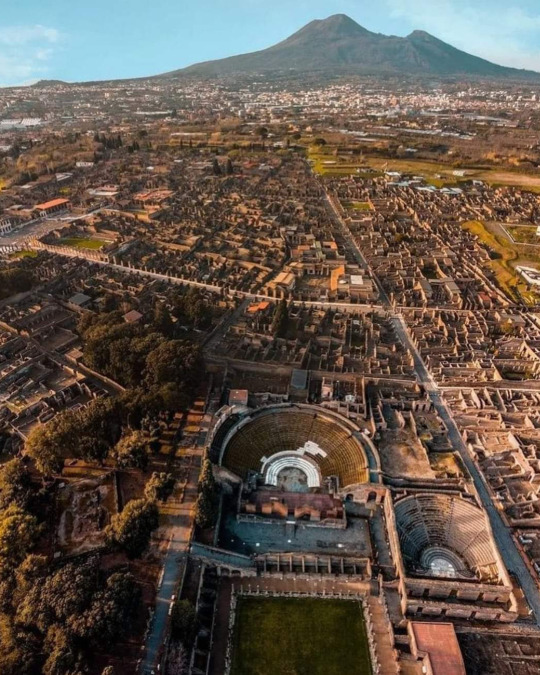
Pompeya es un vasto yacimiento arqueológico situado en la región de Campania, al sur de Italia, cerca de la costa de la bahía de Nápoles. Pompeya, que fue una próspera y sofisticada ciudad romana, quedó sepultada bajo metros de ceniza y piedra pómez tras la catastrófica erupción del Vesubio en el año 79 d.C.
18 notes
·
View notes
Text
Vice Presidential Profiles: Thomas Riley Marshall (VP #28)
THOMAS RILEY MARSHALL
28th Vice President of the United States (1913-1921)
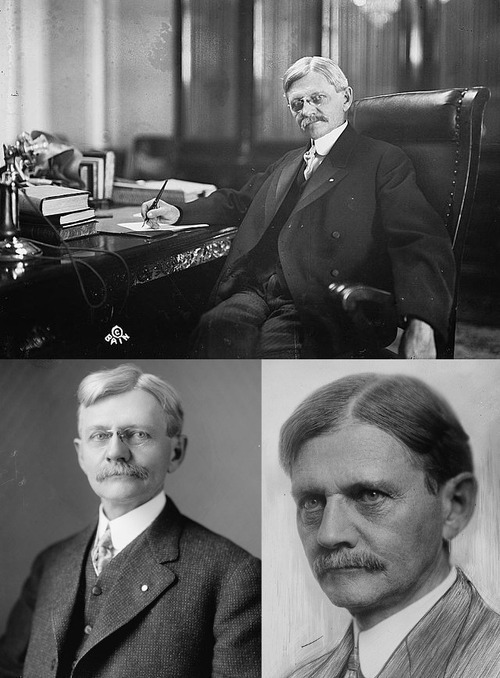
Full Name: Thomas Riley Marshall
Born: March 14, 1854, North Manchester, Wabash County, Indiana Religion: Presbyterian
College: Wabash College, Crawfordsville, Indiana
Career Before the Vice Presidency: Lawyer, Columbia City, Indiana (1875-1909); Unsuccessful Democratic candidate for Prosecuting Attorney of Whitley County, Indiana (1880); 27th Governor of Indiana (January 11, 1909-January 13, 1913)
Political Party as Vice President: Democratic
State Represented as Vice President: Indiana
Term as Vice President: March 4, 1913-March 4, 1921
Length of Vice Presidency: 8 years, 0 days
Age at Inauguration: 58 years, 355 days
Served: President Wilson (1st term and 2nd term)/32nd Administration (1913-1917) and 33rd Administration (1917-1921)/63rd Congress (1913-1915), 64th Congress (1915-1917), 65th Congress (1917-1919), and 66th Congress (1919-1921)
Post-Vice Presidential Career: Lawyer, Indianapolis, Indiana (1921-1925); Author (1921-1925); Appointed by President Harding to serve as a member of the Lincoln Memorial Commission (1921), Appointed by President Harding to serve as a member of the Federal Coal Commission (1922-1923)
Died: June 1, 1925, Washington, D.C.
Age at Death: 71 years, 79 days
Cause of Death: Heart attack
Buried: Crown Hill Cemetery, Indianapolis, Indiana
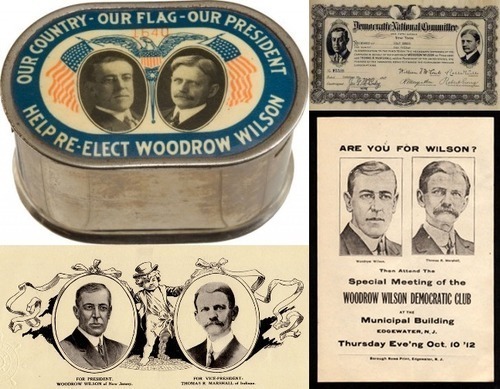
Random Facts About Vice President Marshall:
•On August 27, 1858, 4-year-old Thomas Riley Marshall accompanied his father, Daniel, to Freeport, Illinois, where Abraham Lincoln and Stephen A. Douglas were engaging in the second of seven debates which would go down in history as the epic "Lincoln-Douglas Debates". Little "Tommy" was too young to understand what was going on, but he had the best seat in the house. When Lincoln spoke, Tommy Marshall sat on the lap of Senator Douglas. When Douglas spoke, Marshall sat on the lap of Abraham Lincoln.
•While Marshall attended college, he wrote an article for the school newspaper about a visiting female speaker who gave a lecture on campus at Wabash College in Crawfordsville, Indiana. The woman felt Marshall had crossed the line and sued the future Vice President for libel in 1872. Each side lawyered up with notable legal representation. The plaintiff hired Lew Wallace, who was a Union General during the Civil War, later became Governor of the New Mexico Territory, and is best-known today as the author of Ben-Hur. Marshall found himself a lawyer in Indianapolis that was also a former Union General during the Civil War and who would later surpass even Wallace's political accomplishments. Marshall's lawyer was able to make it clear to the plaintiff that Marshall's comments might have been in poor taste, but they were likely true, and the case was dropped. Marshall's attorney was future President Benjamin Harrison.
•After beginning his own law career, Marshall fell in love with a young woman named Kate Hooper, but she died shortly after they were engaged to be married. Marshall was devastated by her death and began drinking heavily. Alcoholism took a toll on Marshall's health, career, and reputation until he finally married Lois Kimsey in 1895. Lois helped Marshall quit drinking, which gave him the focus to begin his political career. He didn't win his first political election until he was 54 years old.
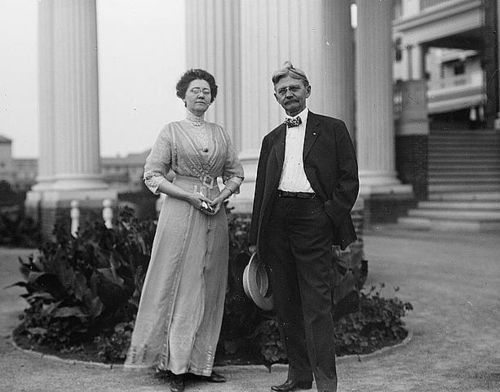
•In 1909, Marshall -- as Governor of Indiana -- installed the final brick to complete the Indianapolis Motor Speedway, the site of the Indianapolis 500.
•Marshall was not Woodrow Wilson's first choice as his Vice President in 1912. In fact, Marshall wasn't Wilson's choice as a running mate at all. Wilson had wanted the Speaker of the House of Representatives, Oscar Underwood of Alabama, to join him on the ticket, but Underwood declined the offer. The delegates of the Democratic National Convention decided upon Marshall, and Wilson was not pleased with the choice. He thought Marshall was a "small-calibre man".
•Despite his original doubts, Wilson stuck with Marshall in 1916 when many of the President's closest aides suggested dumping the VP in favor of another running mate. With their victory that year, Marshall became the first Vice President since John C. Calhoun in 1828 to be re-elected to another term.
•Thomas Riley Marshall is largely remembered because of his many humorous quotes poking fun at the insignificance of the Vice Presidency. When he was nominated as VP, Marshall pointed out that it made sense since he was a native of Indiana, "the mother of Vice Presidents, the home of more second-class men than any other state." A favorite Marshall story was one about a man who had two sons: "One went away to sea...the other was elected Vice President...he never heard from either one afterward."
•Other popular Marshall quotes:
-"I don't want to work [after retiring], but I wouldn't mind being Vice President again."
-"If you look on me as a wild animal, be kind enough to throw peanuts at me." (To a group touring the Capitol)
-"What this country needs is a good five-cent cigar."
•Despite Marshall's humor and frivolity, there was a serious Constitutional crisis near the end of Woodrow Wilson's Presidency. Wilson suffered a massive stroke in 1919 that virtually incapacitated him and kept him from fully discharging the duties of his office. For the last 18 months of of Wilson's Presidency, Wilson's wife and a handful of close aides carefully managed the Administration, keeping the truth about Wilson's health hidden. Today, a President in Wilson's condition would almost certainly need to hand the office over to the officer next in the line of succession, either temporarily or permanently. But the 25th Amendment did not exist during Wilson's time, and a group of Wilson confidants conspired to keep the truth from the rest of Wilson's Administration, including Vice President Marshall. Marshall didn't push to find out the extent of Wilson's illness; if he had, Wilson likely would have been forced to resign and Marshall would have become President. Most of the people close to President Wilson believed it would be disastrous to pass the reigns of government on to Vice President Marshall. But considering the track record of the Wilson Administration at the end of his Presidency, many historians believe that "President Marshall" could have helped get the Treaty of Versailles ratified and shepherd the United States into joining the League of Nations.
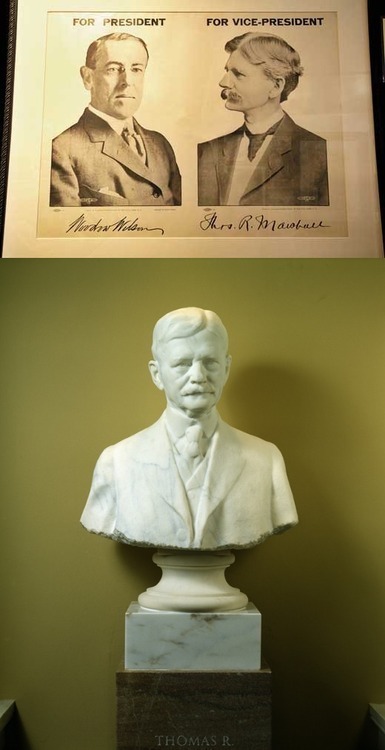
#History#Vice Presidential Profiles#Vice Presidents#Vice Presidency#Veeps#VP#VPOTUS#Vice Presidential History#Thomas Riley Marshall#Vice President Marshall#Thomas R. Marshall#Woodrow Wilson#President Wilson#Wilson Administration#Presidential History#Politics#Political History
6 notes
·
View notes
Photo


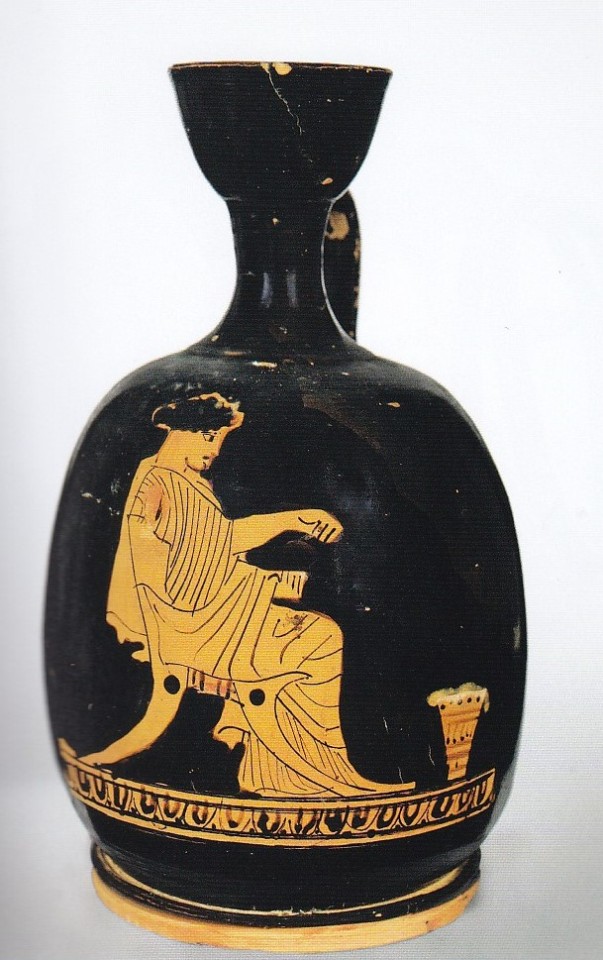

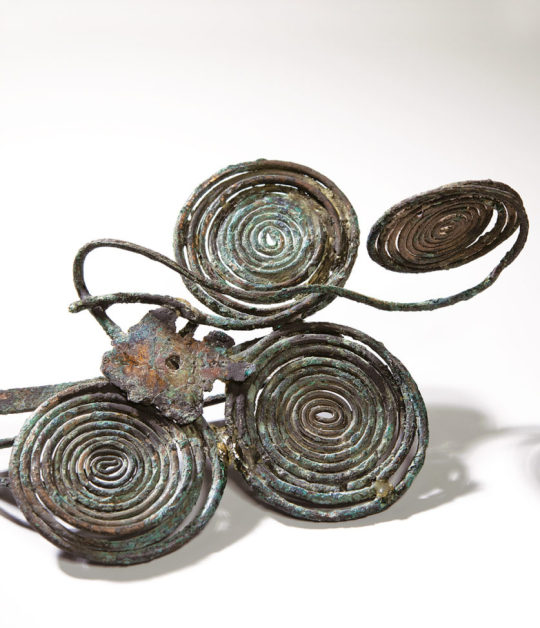





Venustas
Grazia e Bellezza a Pompei
a cura di Massimo Osanna e Grete Stefani
arte’m, Napoli 2020, 168 pagine, ill.a colori, 15 x 24 cm., ISBN:978-88-569-0752-0
euro 15,00
email if you want to buy :[email protected]
Mostra Parco Archeologico di Pompei, Palestra Grance 30 luglio 2020 - 309 gennaio 2021
… anelli, collane, bracciali, orecchini e gemme che i pompeiani portarono con sé nel tentativo disperato di sfuggire alla tragica eruzione del vesuvio del 79 d.c., e statue delle muse polymnia, la musa della poesia sacra ed erato, la musa della poesia amorosa costituiscono il cuore di venustas, mostra pensata come un approfondimento di un percorso di ricerca avviato lo scorso anno con vanity, un confronto tra i gioielli del mondo greco e quelli di pompei. venustas – termine con il quale si indicava la bellezza, la grazia, l’eleganza, il decoro ma anche la gioia – ci ricorda la “bellezza della mente” e l’importanza di avere uno spirito saldo, che faccia da sostegno alla bellezza perché “solo lo spirito rimane intatto fino alla morte” [ovidio].
23/09/22
orders to: [email protected]
ordini a: [email protected]
twitter: @fashionbooksmi
instagram: fashionbooksmilano, designbooksmilano tumblr: fashionbooksmilano, designbooksmilano
#Venustas#Pompei#Grazia e Bellezza#anelli#collane#orecchini#gemme#art exhibition catalogue#Parco Archeologico Pompei 20/21#archeologia#fashionbooksmilano
24 notes
·
View notes